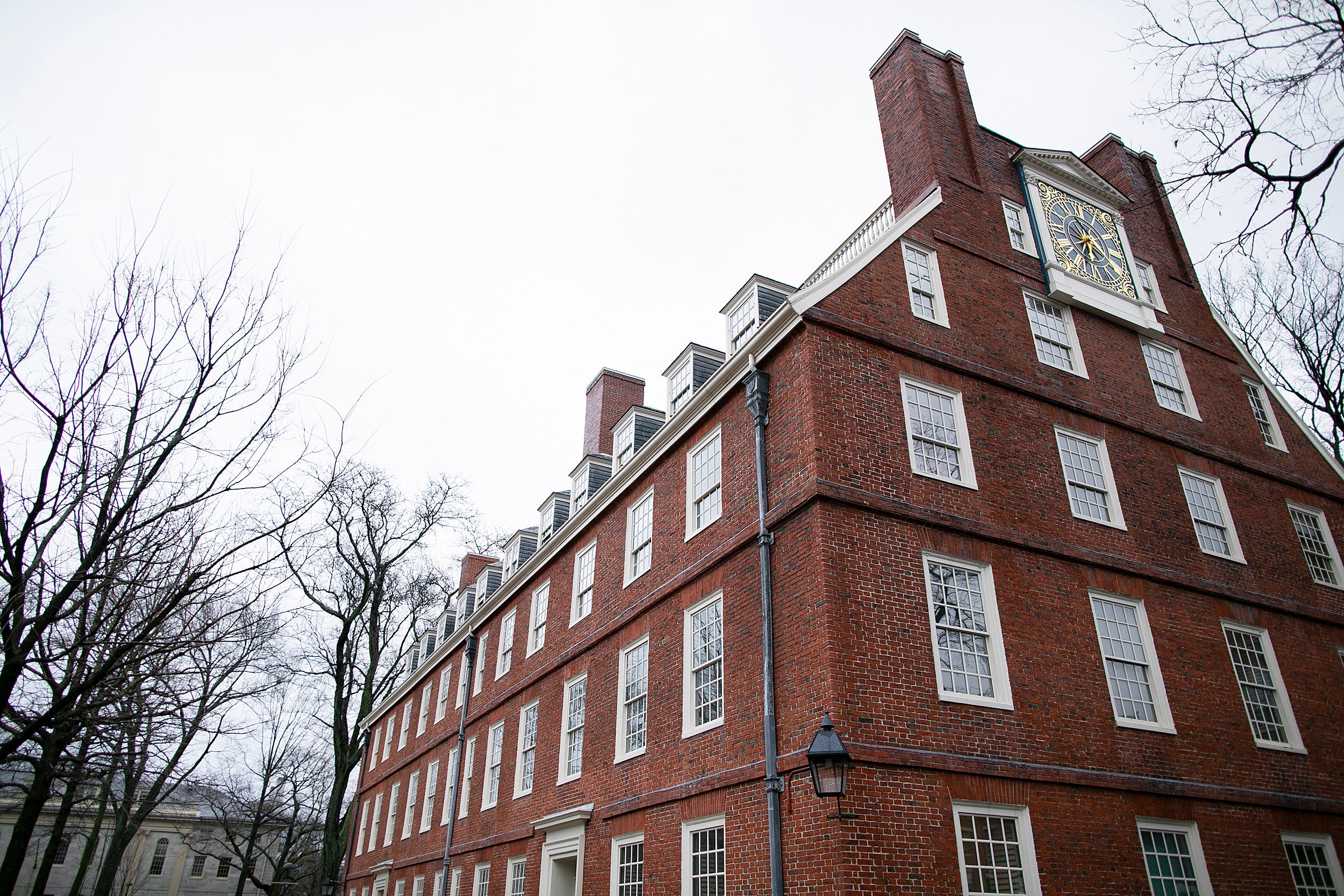Three scholars awarded Aramont Fellowships

Massachusetts Hall. Stephanie Mitchell/Harvard file photo
The Office of the Vice Provost for Research is pleased to announce the fourth cohort of Aramont Fellows for Emerging Science Research. Aramont Fellowships are awarded to exceptional early-career faculty and postdoctoral scholars, nominated by the deans of their respective schools across Harvard.
Established in 2018 with a gift from the Aramont Charitable Foundation, the program supports high-risk, high-reward research at the Faculty of Arts and Sciences, Harvard Medical School, the Harvard T.H. Chan School of Public Health, and the Harvard John A. Paulson School of Engineering and Applied Sciences. It is designed with early-career researchers in mind, helping faculty to build capacity in their research labs and allowing postdoctoral fellows to pursue new promising areas of inquiry.
“The Aramont Fellowships are a testament to the potential of early career scientists to make exciting discoveries that have a tangible impact on the world,” said Provost Alan M. Garber. “The program sustains a tradition of innovation and empowers Harvard researchers to pursue visionary science. We are deeply grateful to the Aramont Charitable Foundation for its support of some of the world’s brightest and most promising scientists as their careers get underway.”
The Aramont Fellowship program has been immensely successful in launching the careers of young scientists at Harvard. Prior recipients have gone on to win other prestigious awards, including 2018 Aramont Fellows Julia Mundy and Carlos Giovanni Silva-García. Mundy, an assistant professor of physics at the Faculty of Arts and Sciences, was one of twenty scientists and engineers nationally to be selected as the 2020 Packard Fellows for Science and Engineering. Silva-García, a postdoctoral fellow at the Harvard T.H. Chan School of Public Health, received the NIH/NIA Pathway to Independence Award thanks in no small part to the progress he made in his research on aging as an Aramont Fellow. The Aramont Fellowship program is where new ideas emerge and innovative research happens with formative influence on the trajectories of the fellows’ careers.
This year’s three Aramont Fellows are:
Matteo Mitrano
Assistant professor of physics at the Faculty of Arts and Sciences
Research project: “Creating Synthetic Dimensions in Strongly Correlated Materials”
Electrons in materials move at most in three spatial dimensions — length, width, and depth — but what if they could propagate in additional dimensions? No one has yet produced a configuration of what these extra dimensions would look like in a real-world material, but Aramont Fellow for Emerging Science Research Matteo Mitrano hopes to change that by producing the first realization of artificial synthetic dimensions in a quantum material driven by a laser. His research would engineer unprecedented four-dimensional electronic structures that could exhibit more robust superconductivity — the property of zero electrical resistance in solids at very low absolute temperatures — than three-dimensional structures. Mitrano will advance this research with the help of a talented postdoctoral fellow to be hired through the Aramont award.
Maxim Prigozhin
Assistant professor of molecular and cellular biology at the Faculty of Arts and Sciences and of applied physics at the Harvard John A. Paulson School of Engineering and Applied Sciences
Research project: “Small-Molecule Cathodophores for Multicolor Electron Microscopy”
With support from the Aramont Fund for Emerging Science Research, Maxim Prigozhin will develop a new type of electron microscopy — a biomedical research technique for obtaining high-resolution images of biological and non-biological specimens — that will be a major advance in the biological imaging field, improving our understanding of cellular processes such as viral infection, cellular signaling, and intracellular trafficking. This new type of electron microscopy would be capable of simultaneous imaging of cellular membranes and multicolor visualization of proteins with nanoscale resolution using cathodoluminescence, which occurs when a material interacts with an electron beam that causes the material to emit light or electromagnetic radiation ranging from ultraviolet to near-infrared. This technique will avoid the image quality issues common in correlative imaging.
Jessica Garbern
Instructor of pediatrics at Harvard Medical School; postdoctoral fellow in Stem Cell and Regenerative Biology at the Faculty of Arts and Sciences
Research project: “Injectable Self-Assembling Vascularized Human Myocardium”
Both cardiomyocytes, the muscle cells that make the heart beat rhythmically, and endothelial cells, the cells that control blood flow, are crucial to the lifelong function of the heart. Aramont Fellow for Emerging Science Research Jessica Garbern will focus on enhancing the survival of cardiomyocytes, which can be lost in major heart attacks. Self-assembling peptides (SAPs), or peptides with specific sequences designed to form a variety of structures to support cell organization, have shown tremendous therapeutic potential, along with human induced pluripotent stem cells (iPSCs), stem cells genetically reprogrammed from a patient’s own skin cells or other body cells. In her research, Garbern will use SAPs to test whether co-delivery of endothelial cells and cardiomyocytes derived from iPSCs enhances cardiomyocyte survival in vitro and in vivo.




